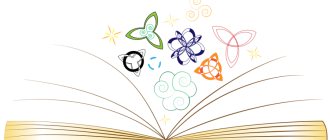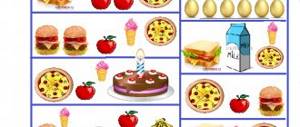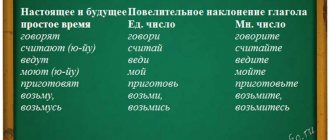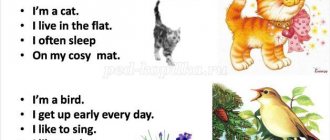In this article you will find a selection of texts for reading in English for grade 7. Texts and tasks have different difficulty levels, so you can choose a text that matches the desired level. All reading tests come with answers.
Reading texts for grade 7 are given on the following topics:
- School and education – Reading test My New School Is Fantastic.
- Traveling and tourism / Animals / Britain — Reading comprehension test Mysterious Monster
- Music – Reading task Street musicians
At the end of the article you will find answers to reading tests.
The text for grade 7 on the topic ANIMALS with assignments can also be found here.
7th Grade Reading Text #2 – Mysterious Monster
At different times, thousands of people say that they have seen a large animal in the famous lake called Loch Ness in Scotland. For many centuries, people have tried to catch it. People who live there always talk about the mysterious animal in the lake, and many of them believe that it is still there today.
In 1933, John McGregor, a local businessman, saw that the lake began to bubble, and a huge animal with two humps came out of it.
After that, scientists examined the lake with underwater equipment and tried to find out what kind of animal lived there. Of course, they haven't found it yet, because the lake is so deep and so dark.
Tourists from all over the world have visited Loch Ness, they hope to see the monster. They have even given it a nickname “Nessie”. Many people even show photos of the monster, but they are usually photos of the pictures of the monster. Scientists suppose that the Loch Ness monster is a dinosaur, which has survived since the Ice Age.
Here is a description of the monster:
- Length: About 50 meters.
- Body: With two humps.
- Half horse, half snake and quite small.
- Long and thin, like a giraffe.
- Yellow-brown.
- People think that it eats sheep on land and underwater plants.
- Shy, doesn't want to be seen.
- Lives in the deepest and coldest parts of the lake about 1 km from the surface.
Assignments to the text.
Exercise 1. Insert the words according to the text.
have visited, haven't found, tried, so deep and so dark, came out of it
- For many centuries people…to catch it.
- The lake began to bubble and a huge animal…
- Of course they…it yet.
- The lake is……
- Tourists from all over the world… Loch Ness.
Exercise 2. Choose the correct ending for the sentences.
- Loch Ness is in…
- England b) Scotland c) Wales
- Loch Ness is...
- a lake b) a river c) a village
- Scientists examined the lake with
- a) underwater equipment c) computers d) special ultrasound gadgets
- Tourists have given the monster a nickname
- Locky b) Nessie c) Lohnessi
Exercise 3. True or false.
- For many centuries, people have tried to catch the Loch Ness monster.
- No one believes that the Loch Ness monster is still in the lake today.
- In 1956, John McGregor, a local businessman, saw that the lake began to bubble.
- The lake is very deep.
- Many people show photos of the monster.
Exercise 4. Complete the description of the Loch Ness monster.
- Length: About _______ (1)
- Body: With two humps.
- Half __________ (2), half snake and quite small.
- Long and thin, like a giraffe.
- Yellow-brown.
- People think that it eats __________ (3) on land and underwater ________ (4).
- Shy, doesn't want to be seen.
- Lives in the deepest and __________ (5) parts of the lake about 1 km from the surface.
Exercise 5 . Describe any animal using this example.
Test in English (grade 7)
Explanatory note
Davydova Natalya Sergeevna
English teacher
Aksuat comprehensive secondary school
West Kazakhstan region Terektinsky district village. Aksuat
Test based on the results of the second quarter for 7th grades of secondary schools in English.
This test is a set of tasks consisting of 25 questions. Consists of three sections: listening (5 test tasks based on the text), vocabulary and grammar test (15 tasks), reading (5 test tasks based on the text from the textbook).
There are two test options to more effectively test students' knowledge.
The test was compiled according to calendar and thematic planning for the 2016-2017 academic year.
Language of instruction: Russian
Textbooks:
- Messages Student's book for Kazakhstan 3 Diana Goodey, Noel Goodey, Miles Graven Translations by N. Mukhamedjanova, B. Berdimbetova and T. Nam, 2015
- Messages Workbook 3 Meredith Levy, Noel Goodey, Diana Goodey, 2015
Test based on the results of
the second quarter
Class:
7
Item:
English language
I
variant
- Listening
_
Answer the questions by the text ( Listen to the text and answer the questions ) .
Compulsory secondary education begins when children are 11 or 12 and lasts for 5 years. Secondary school is traditionally divided into 5 forms: a form to each year. Children study English, Mathematics, Science, History, Art, Geography, Music, a Foreign language and have lessons of Physical training. Religious education is also provided. English, Mathematics and Science are called “core” subjects. At the age of 7,11 and 14 pupils take examinations in the core subjects.
There are 3 types of state secondary schools in Great Britain. They are:
1) comprehensive schools, which take pupils of all abilities without exams. In such schools pupils are often put into certain sets or groups, which are formed according to their abilities for technical or humanitarian subjects. Almost all senior pupils (around 90 per cent) go there;
2) grammar schools, which give secondary education of a very high standard. Entrance is based on the test of ability, usually at 11.
3) modern schools, which don't prepare pupils for universities. Education in such schools gives good prospects for practical jobs.
After five years of secondary education, at the age of 16, pupils take the General Certificate of Secondary Education (GCSE) examination. When they are in the third or in the forth form, they begin to choose their exam subjects and prepare for them.
1.
How long does compulsory secondary education last in the UK?
A) 2 years; B) 5 years; C) 4 years; D) 7 years; E) 10 years.
2.
Which subjects are called “core” subjects?
A) Geography, Biology, Art. B) Mathematics, Science, History; C) English, Mathematics, Science; D) Religious education; E) Art, Music, Physical training.
3.
How many types of state secondary schools in Great Britain?
A) 3; B) 4; C) 2; D) 5; E) 1.
4. Is there religious education in the UK?
A) No, there is not. B) Yes, it is. C) Yes, it does. D) No, it isn't. E) Yes, there is.
5. How many percent of senior pupils go to the comprehensive schools?
A) 90%; B) 60%; C) 80%; D) 45%; E) 70%.
- Lexical and grammar test
- What grammar Tense is it? Choose the right option.
I have never seen an ocean.
- Present Simple; B) Past Simple; C) Present Perfect; D) Future Simple; E) Present Continuous.
Choose the right options:
- Have you finished your homework?
- No, I haven't. B) No, I have got it. C) No, I didn't. D) No, I don't. E) No, I am not.
- Have you had a god day?
- Yes, we did. B) Yes, we do. C) Yes, we have. D) Yes, it is. E) Yes, he has.
- Have you ____been to London?
- never; B) ever; C) just; D) yet; E) have.
- She has ____cooked a meal.
- never; B) ever; C) just; D) yet; E) have.
- I have _____saw a ghost.
- never; B) ever; C) just; D) yet; E) have.
- I have had my computer ____3 years.
- since; B) just; C) never; D) for; E) ever.
- My mother has worked at school _____last year.
- since; B) just; C) never; D) for; E) ever.
Complete the sentences with reflexive pronouns.
- He fell down and hurt __________.
- myself; B) yourself; C) himself; D) herself; E) ourselves.
- Tell me more about __________.
- myself; B) yourself; C) himself; D) herself; E) ourselves.
- Where were the first Olympic Games held?
- Rome; B) Athens; C) San Francisco; D) New York; E) Moscow.
- The first skyscraper ____built in Chicago.
- were; B) was; C) is; D) has; E) have.
- Translate the word
“education”
- school; B) ending; C) education; D) institution; E) state.
- Translate
the word “ curriculum ”
A) curriculum; B) science; C) schedule; D) course; E) class.
15.
Translate into the English “ The email has just come ”
A) The email has just come. B) The email is coming. C) The email came. D) The email had come. E) The email comes.
III. Reading
Read the text “
Computer Animation”
.
Answer the following questions .
- Were the first cartoons made a long time ago?
- Yes, it is. B) Yes, they were. C) Yes, it was. D) Yes, they do. E) No, it isn't.
- Did Walt Disney use a computer?
- Yes, he did. B) No, he didn't. C) No, he is. D) No, it isn't. E) Yes, there is.
- What was the first full-length computer animated film?
- Toy Story; B) Shrek; C) Snow White and the Seven Dwarfs; D) Shrek 2; E) Tom and Jerry.
- When the film Toy Story was made?
- In 1937; B) in 1990; C) in 1995; D) 2005; E) in 2020.
- How much money made Shrek 2 in its first 25 days in the USA?
- $250 million; B) $450 million; C) $340 million; D) $100 million; E) $50 million.
Test based on the results of
the second quarter
Class:
7
Item:
English language
II
variant
- Listening _ _
Answer the questions by the text ( Listen to the text and answer the questions ) .
Compulsory secondary education begins when children are 11 or 12 and lasts for 5 years. Secondary school is traditionally divided into 5 forms: a form to each year. Children study English, Mathematics, Science, History, Art, Geography, Music, a Foreign language and have lessons of Physical training. Religious education is also provided. English, Mathematics and Science are called “core” subjects. At the age of 7,11 and 14 pupils take examinations in the core subjects.
There are 3 types of state secondary schools in Great Britain. They are:
1) comprehensive schools, which take pupils of all abilities without exams. In such schools pupils are often put into certain sets or groups, which are formed according to their abilities for technical or humanitarian subjects. Almost all senior pupils (around 90 per cent) go there;
2) grammar schools, which give secondary education of a very high standard. Entrance is based on the test of ability, usually at 11.
3) modern schools, which don't prepare pupils for universities. Education in such schools gives good prospects for practical jobs.
After five years of secondary education, at the age of 16, pupils take the General Certificate of Secondary Education (GCSE) examination. When they are in the third or in the forth form, they begin to choose their exam subjects and prepare for them.
1.
How long does compulsory secondary education last in the UK?
A) 2 years; B) 5 years; C) 4 years; D) 7 years; E) 10 years.
2.
Which subjects are called “core” subjects?
A) Geography, Biology, Art. B) Mathematics, Science, History; C) English, Mathematics, Science; D) Religious education; E) Art, Music, Physical training.
3.
How many types of state secondary schools in Great Britain?
A) 3; B) 4; C) 2; D) 5; E) 1.
4. Is there religious education in the UK?
A) No, there is not. B) Yes, it is. C) Yes, it does. D) No, it isn't. E) Yes, there is.
5. How many percent of senior pupils go to the comprehensive schools?
A) 90%; B) 60%; C) 80%; D) 45%; E) 70%.
- Lexical and grammar test
- What grammar Tense is it? Choose the right option.
I saw my teacher yesterday.
- Present Simple; B) Past Simple; C) Present Perfect; D) Future Simple; E) Present Continuous.
Choose the right options:
- Have you
bought any milk?
- No, I haven't. B) No, I won't. C) No, I didn't. D) No, I don't. E) No, I am not.
- Have you written your control work?
- Yes, we did. B) Yes, we do. C) Yes, we have. D) Yes, it is. E) Yes, he has.
- She has _____been in the USA.
- never; B) ever; C) just; D) yet; E) have.
- Have you ____rode a mountain bike?
- never; B) ever; C) just; D) yet; E) have.
- They have ____swum 400 meters.
- never; B) ever; C) just; D) yet; E) have.
- I have lived in Uralsk ____2013.
- since; B) just; C) never; D) for; E) ever.
- He has studied here ____4 years.
- since; B) just; C) never; D) for; E) ever.
- She believes in __________.
- myself; B) yourself; C) himself; D) herself; E) ourselves.
- We are sure of __________.
- myself; B) yourself; C) himself; D) herself; E) ourselves.
- Where was the Statue of Liberty made?
- the USA; B) France; C) Canada; D) Russia; E) Great Britain.
- Mickey Mouse ____created by Walt Disney in 1928.
- were; B) was; C) is; D) has; E) have.
- Translate the word
“ primary ”
- preschool; B) initial; C) secondary education; D) state; E) private.
- Translate the word
“ science ”
A) curriculum; B) science; C) schedule; D) course; E) class.
- Translate into the English
“I just walked in”
A) I come here every day. B) I am coming. C) I came here yesterday. D) I had come. E) I have just come.
III. Reading
Read the text “
Computer Animation”
.
Answer the following questions .
- Were the first cartoons made a long time ago?
A) Yes, it is. B) Yes, they were. C) Yes, it was. D) Yes, they do. E) No, it isn't.
- Did Walt Disney use a computer?
A) Yes, he did. B) No, he didn't. C) No, he is. D) No, it isn't. E) Yes, there is.
- What was the first full-length computer animated film?
A) Toy Story; B) Shrek; C) Snow White and the Seven Dwarfs; D) Shrek 2; E) Tom and Jerry.
- When the film Toy Story was made?
A) In 1937; B) in 1990; C) in 1995; D) 2005; E) in 2020.
- How much money made Shrek 2 in its first 25 days in the USA?
- $250 million; B) $450 million; C) $340 million; D) $100 million; E) $50 million.
Sources:
- Messages Student's book for Kazakhstan 3 Diana Goodey, Noel Goodey, Miles Graven Translations by N. Mukhamedjanova, B. Berdimbetova and T. Nam, 2015
- Messages Workbook 3 Meredith Levy, Noel Goodey, Diana Goodey, 2015
- Internet resources of the site https://www.alleng.ru/engl-top/648.htm




